Geoscientific information
Keywords
Regions
Contact for the resource
Provided by
Years
Formats
Representation types
Update frequencies
status
Scale
Resolution
-
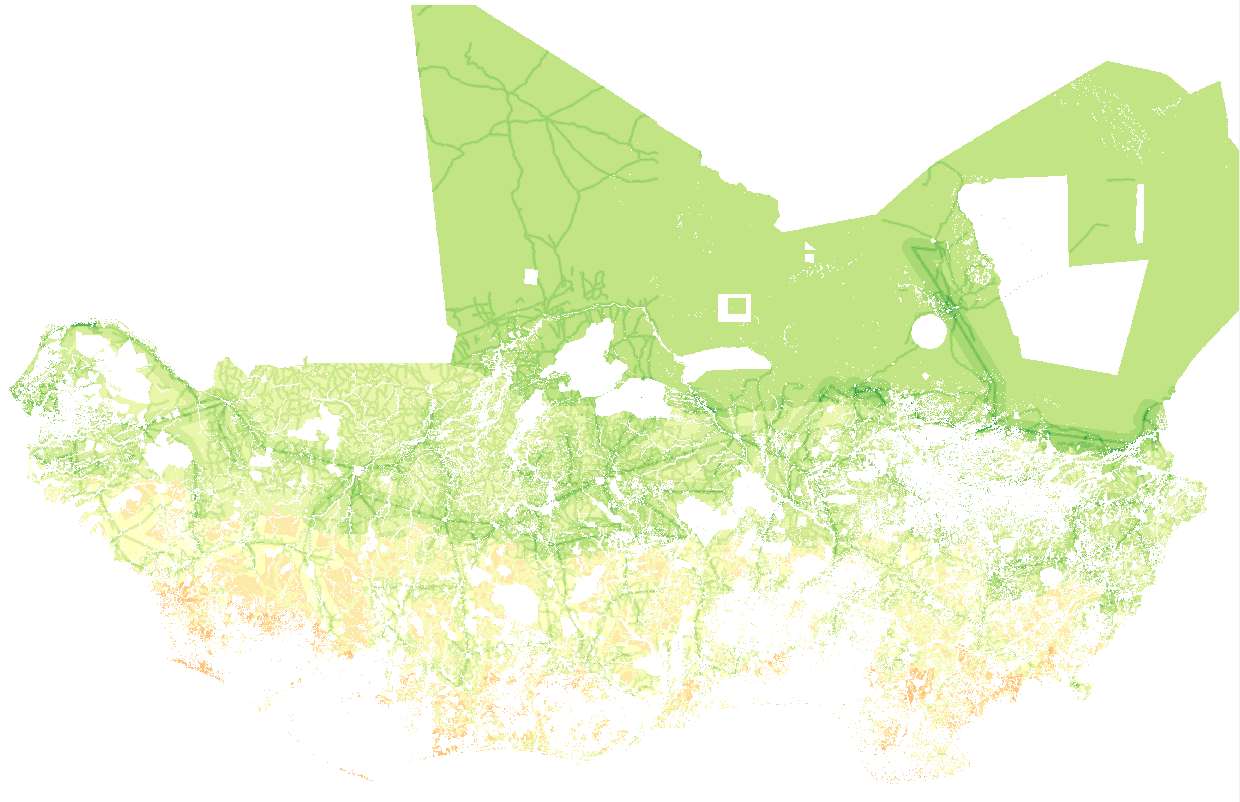
The suitability maps, contain information on locations suitable for installation of the respective solar systems in accordance with the restrictive criteria adopted. Locations are evaluated according to their suitability for solar systems deployment according to topographical, legal, and social constraints, as well as factors that could facilitate or impede solar generation development. The study is conducted on a regional scale. The results can be used for identification of potential areas of interest for solar generation deployment, and as a support for integration between electricity grid expansion and off-grid electrification policies.
-
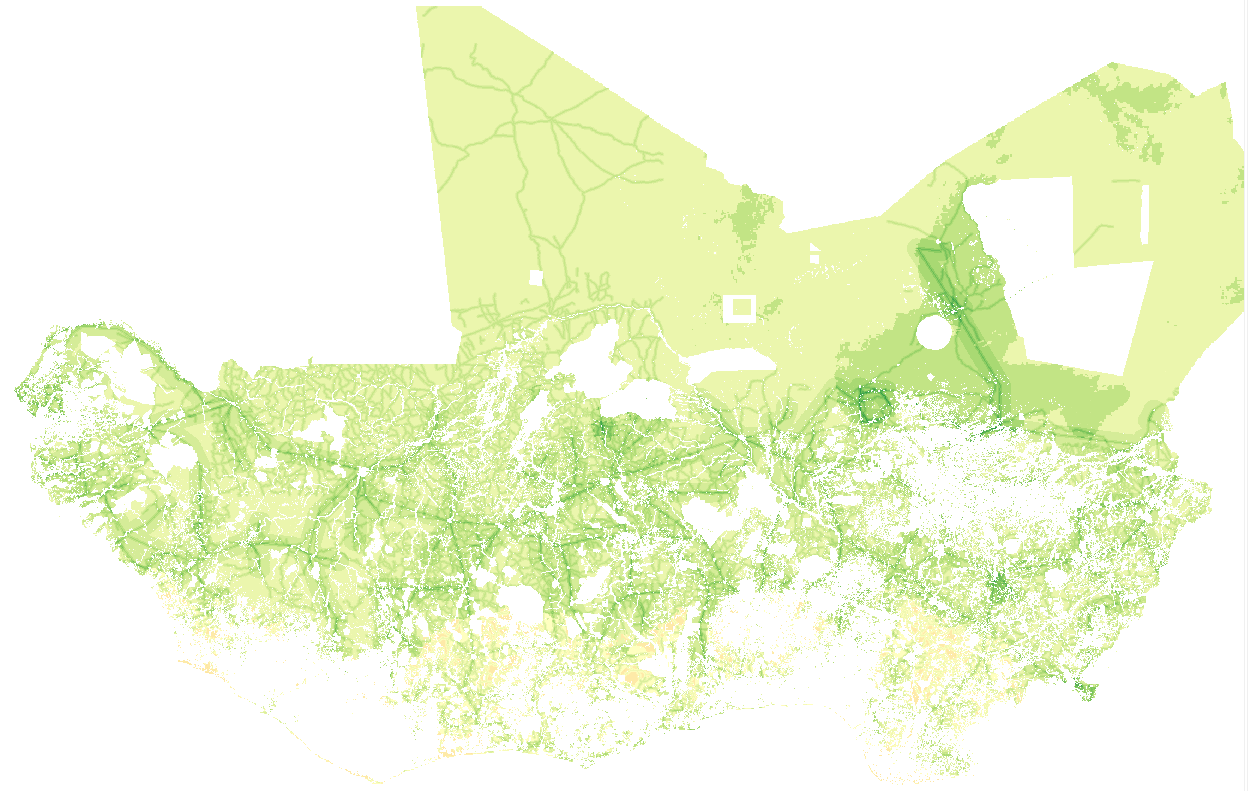
The suitability maps, contain information on locations suitable for installation of the respective solar systems in accordance with the restrictive criteria adopted. Locations are evaluated according to their suitability for solar systems deployment according to topographical, legal, and social constraints, as well as factors that could facilitate or impede solar generation development. The study is conducted on a regional scale. The results can be used for identification of potential areas of interest for solar generation deployment, and as a support for integration between electricity grid expansion and off-grid electrification policies.
-
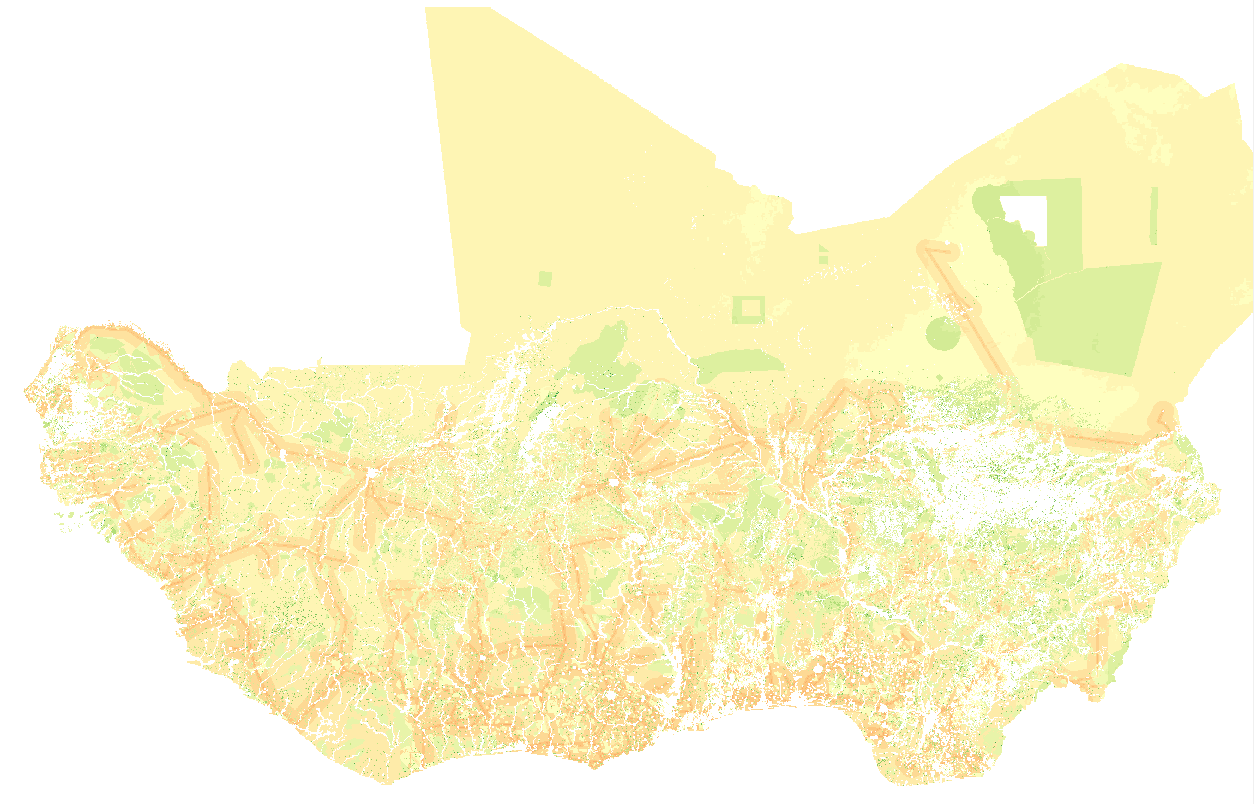
The suitability maps, contain information on locations suitable for installation of the respective solar systems in accordance with the restrictive criteria adopted. Locations are evaluated according to their suitability for solar systems deployment according to topographical, legal, and social constraints, as well as factors that could facilitate or impede solar generation development. The study is conducted on a regional scale. The results can be used for identification of potential areas of interest for solar generation deployment, and as a support for integration between electricity grid expansion and off-grid electrification policies.
-
The resource was developed by NEXANT (EEUU) for ECREEE using 3TiER global dataset. The methodology is explained in the resource below available for downloading. Dataset is available in raster format (.geotiff) with a resolution of 3,5 km.
-
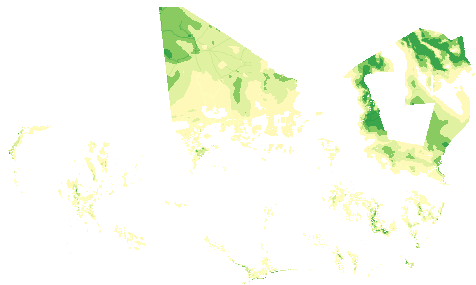
The suitability maps, contain information on locations suitable for installation of the respective wind electricity generation systems in accordance with the restrictive criteria adopted. Locations are evaluated according to their suitability for onshore wind systems deployment according to topographical, legal, and social constraints, and well as factors that could facilitate or impede wind generation development. The present study focus exclusively on land suitability for the installation of onshore wind turbine and wind farm. The study is conducted on a regional scale. The results can be used for identification of potential areas of interest for solar generation deployment, and as a support for integration between electricity grid expansion and off-grid electrification policies. Off-grid installations - ecological scenario: Installation NOT connected to the electrical grid, environmental impacts minimized
-

This dataset was generated using GIS methods to estimate technical potential for solar electricity generation in rural areas of ECOWAS region. Technical potential of solar generation in a chosen area may be defined as the amount of the total yearly solar radiation available in that area, taking into account existing geographical constraints, ("suitability maps") that can be converted into electricity given the available solar power technologies. Technical potentials in GWh per year per cell at 1km resolution have been calculated by multiplying DNI (or GHI) for the technical parameters (performance, efficiency) related to CSP or PV, and for the available area. The available area was estimated using for: - CSP (grid connected) only cells with land suitability score > 302 (5% of total cells) - PV (grid connected) only cells with land suitability score > 299 (5% of total cells) - PV (off grid) only cells with land suitability score > 255 (5% of total cells)
-
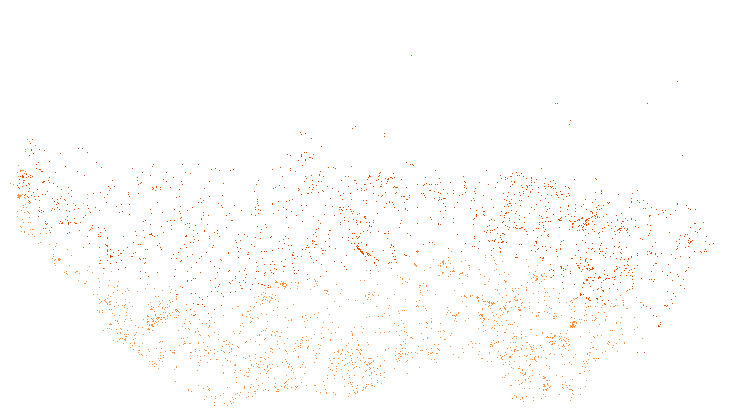
This dataset was generated using GIS methods to estimate technical potential for solar electricity generation in rural areas of ECOWAS region. Technical potential of solar generation in a chosen area may be defined as the amount of the total yearly solar radiation available in that area, taking into account existing geographical constraints, ("suitability maps") that can be converted into electricity given the available solar power technologies. Technical potentials in GWh per year per cell at 1km resolution have been calculated by multiplying DNI (or GHI) for the technical parameters (performance, efficiency) related to CSP or PV, and for the available area. The available area was estimated using for: - CSP (grid connected) only cells with land suitability score > 302 (5% of total cells) - PV (grid connected) only cells with land suitability score > 299 (5% of total cells) - PV (off grid) only cells with land suitability score > 255 (5% of total cells)
-
River discharge at the Batiara1 gauging station. Station coordinates: X 505881 Y 1240305
-
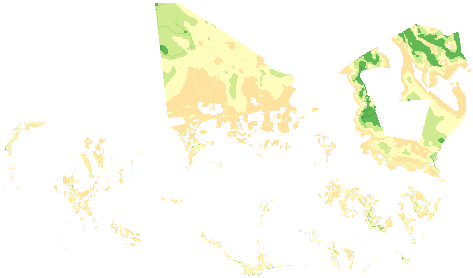
The suitability maps, contain information on locations suitable for installation of the respective wind electricity generation systems in accordance with the restrictive criteria adopted. Locations are evaluated according to their suitability for onshore wind systems deployment according to topographical, legal, and social constraints, and well as factors that could facilitate or impede wind generation development. The present study focus exclusively on land suitability for the installation of onshore wind turbine and wind farm. The study is conducted on a regional scale. The results can be used for identification of potential areas of interest for solar generation deployment, and as a support for integration between electricity grid expansion and off-grid electrification policies. Grid connected installations - practical scenario: Installation connected to the electrical grid, ease of installation maximized
-

White-sky broadband albedo, based on the MODIS MCD43B3 product for West Africa from 2000 to 2014. The MODIS standard dataset has been enhanced by data quality assessment, gap filling and temporal filtering of the layer Albedo_WSA_Band_shortwave. Monthly composites are created based on 4 observations within the considered month (2 from MODIS-Terra and 2 from MODIS-Aqua). - 1 month time steps - spatial resolution: ~1km (Lat/Lon WGS-84, 0,0085965827 deg) - data scaling: Albedo[no unit]= pixel value*0.001 - number of columns: 2476, number of rows: 2327, number of bands: 12 (except year 2000 with only 10 bands, missing January and February) - valid data range: 0-1000 - no data (e.g. ocean) = 0.0
 PAUWES Data Portal
PAUWES Data Portal